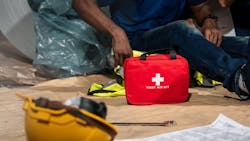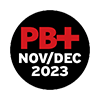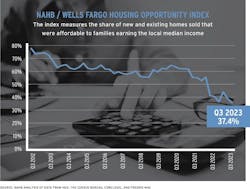Life-Saving Help for Opioid Overdoses on Jobsites
This is the story arc of a new video from the National Association of Home Builders (NAHB) that demonstrates how easy it is to use naloxone, and just how critical it can be in the event of an opioid overdose. NAHB produced the video in cooperation with partners SAFE Project and the Job-Site Safety Institute (JSI).
Darren DiPatri, production director for NAHB’s Structure Productions video team, took the lead role in the 7-minute video, acting as the overdose victim. He says he learned a lot from the experience. “I didn’t realize how easy naloxone is to use,” DiPatri noted. “I assumed it was a needle, a shot. I had no idea it was just a spray. It’s easy to administer.”
RELATED
- Construction Jobsite Safety: Strategies and Resources for Worker Well-Being
- Ladder Safety Tips for Every Jobsite
- Assessing Risk for a Changing Home Building Industry
Naloxone is a powerful tool in the ongoing battle against opioid deaths, which continue to grow to record levels. The chemicals in naloxone counteract opioids in a person’s system, quickly reversing the effects of an overdose.
Naloxone has been used by first responders and drug treatment facilities for years. It is now available for over-the-counter use in all 50 U.S. states and the District of Columbia under brand names such as Narcan and RiVive. In fact, several states provide naloxone free of charge. It is also widely available in major drugstores and pharmacies, including Walgreens, CVS and Walmart, for less than $25 per dose.
The statistics make clear why it’s important to make naloxone available on construction jobsites. In 2021, more than 107,000 Americans died from an overdose, an all-time high. And construction workers represent roughly 25% of fatal opioid overdoses among all workers.
Know the Symptoms of Overdose and When to Use Naloxone
Knowing how and when to use naloxone can save a life. Symptoms of overdose include:
- Lack of consciousness
- Slow, shallow breathing
- Limp body
- Choking or gurgling sounds
- Blue, pale or cold skin, especially blue lips, gums, or fingertips
- Small, constricted, “pinpoint pupils”
Even if you’re mistaken, and a co-worker is not suffering from an overdose, using naloxone will not hurt the person being treated. It’s important to remember, however, that the naloxone spray applicators are single-use. If you press the device to test it or practice spraying it, then the naloxone in that applicator is no longer available.
“The instructions on the box are clear—there is one dose in each bottle,” DiPatri says. “Once people have watched the video, they will know how to do it.”
The naloxone video is available on NAHB’s website. NAHB also offers extensive resources on combatting addiction in the home building industry.
NAHB, along with partners JSI, the SAFE Project, and Advocates for Human Potential, are taking an innovative approach to addressing opioid use and misuse, viewing the problem holistically, and creating solutions and educational resources that address intervention points across the spectrum of prevention, treatment, recovery, and return to work.
NAHB strongly encourages members to purchase naloxone to be kept in jobsite first aid kits.
DiPatri has no doubt that in a moment of crisis, he could use naloxone effectively to save a colleague in the event of an opioid overdose. “I’m confident that I could use it,” he says. “It’s pretty simple—like any kind of saline spray. Just one shot up one nostril.”
The Latest Housing Affordability Data
Housing affordability in the third quarter of 2023 dropped to its lowest level since 2012, when NAHB began consistently tracking affordability. Just 37.4% of new and existing homes sold between the beginning of July and end of September were affordable to families earning the U.S. median income of $96,300, according to the NAHB/Wells Fargo Housing Opportunity Index (HOI).
The HOI was driven lower by rising mortgage rates, elevated construction costs, and limited existing inventory. For the 12th consecutive quarter, Los Angeles-Long Beach-Glendale, Calif., remained the nation’s least affordable major housing market, defined as a metro area with a population of at least 500,000. Just 2.7% of the homes sold during the third quarter in the greater Los Angeles market were affordable to families earning the area’s median income of $98,200. Lansing-East Lansing, Mich., was the nation’s most affordable major housing market, with 79.8% of all new and existing homes sold in the third quarter being affordable to families earning the area’s median income of $97,800.
NOTE: The Housing Opportunity Index will be discontinued after the fourth quarter of 2023. A new housing affordability index from NAHB will begin in the first quarter of 2024. Visit nahb.org/hoi for tables, historical data, and details.



